 Your new post is loading...
 Your new post is loading...

|
Scooped by
Jean-Michel Ané
November 25, 2:00 PM
|
The NIN-like protein 2 (NLP2) transcription factor is highly expressed in the infected cells of the N2 fixation zone of mature nodules in Medicago truncatula. In these cells, NLP2 directly activates the expression of leghemoglobin genes and is required for the full expression of nitrite reductase (NiR). Histological examination of nodules formed under different nitrate regimes revealed that the infected cells of nlp2 display abnormal vacuole morphology under high nitrate (5 mM KNO3). This phenotype is associated with starch accumulation, higher expression of starch biosynthesis genes, and increased levels of nitrite and nitric oxide. A transcriptomic comparison of nlp2 and wild-type nodules across nitrate concentrations revealed that under high nitrate, nlp2 shows lower expression of genes important for hypoxia adaptation, such as alcohol dehydrogenase and pyruvate decarboxylase (PDC), and increased expression of S-nitrosoglutathione reductase (GSNOR), which encodes a key enzyme for nitric oxide homeostasis. These changes in gene expression were associated with lower nodule ATP levels and a higher NAD+/NADH ratio, suggesting that energy metabolism is specifically compromised in nlp2 nodules under high nitrate. Transgenic expression of NiR in the nodules of nlp2-1 mutants grown under high nitrate rescued the vacuole phenotype and restored the expression of GSNOR and PDC to normal levels. Overall, our data indicate a role for NLP2 in the regulation of NiR in N2-fixing cells, suggesting a role for nitrate reduction in nodule energy homeostasis.

|
Scooped by
Jean-Michel Ané
November 24, 6:07 PM
|
The root microbiota plays a vital role in plant growth and health. Recently, Zhang and colleagues demonstrated that the rhizobacterial strain Exiguobacterium R2567 produces cyclo(Leu-Pro), a cyclic dipeptide that regulates tillering by activating the rice strigolactone (SL) signaling pathway through binding to the SL receptor OsD14. This discovery provides an innovative strategy for optimizing crop architecture by harnessing the root microbiota for sustainable agriculture. It holds promise for achieving precision and environmentally friendly production through the application of synthetic microbial communities (SynComs) or functional metabolites. However, practical implementation faces challenges, including the field stability of cyclo(Leu-Pro), competition from native microbial communities, and potential long-term ecological risks, which require further study to realize its full potential.

|
Scooped by
Jean-Michel Ané
November 24, 2:06 PM
|
Iron is a critical micronutrient for both plants and humans, yet its declining availability across agricultural systems threatens global food security and health. Biofortification of food crops has emerged as a promising strategy to combat iron deficiency and anemia, leveraging both crop breeding and microbiome-based approaches to enhance iron mobilization and uptake. Advances in plant and bacterial synthetic biology could enable the precise programming of iron homeostasis and acquisition mechanisms, offering tailored solutions across diverse species and environments. Here, we outline key biomolecules, genes, and biosynthetic and transport pathways that represent underexplored synthetic biology targets for improving crop iron acquisition. We highlight opportunities to tune expression strength, tissue specificity, and cross-host pathway transfer to enhance chelation- and reduction-mediated solubilization of soil iron and augment plant uptake. Finally, we emphasize the broader importance of developing plant–microbe–metal actuators as modular components in genetic circuit design and discuss how their deployment across diverse plant and microbial chassis could accelerate agricultural biofortification and improve global nutrition.

|
Scooped by
Jean-Michel Ané
November 24, 1:07 PM
|
The root microbiome is important for plant development. The impact of the root microbiome is the sum of multiple complex interactions among microorganisms, the plant and the environment. This complexity can be reduced by designing synthetic bacterial communities (SynComs) consisting of bacteria isolated from the roots, making it possible to study these interactions. However, the translational power from SynCom experiments to explain field observations is still very low, which demonstrates the need for development of SynComs that colonize plants comparable to what is observed in the field. Hence, we developed a SynCom consisting of 13 different strains from 13 genera with varying phenotypes originating from the roots of winter wheat (Triticum aestivum cv. Sheriff). The SynCom was inoculated into gamma-irradiated soil prior to sowing and community assembly was determined over 4 weeks using 16S rRNA amplicon sequencing. The SynCom supported growth of winter wheat over a 4-week period and developed in a comparable manner to a more diverse natural community (NatCom) obtained from a soil solution. Furthermore, the temporal dynamics of the majority of the SynCom strains mimicked the development in relative abundance of their respective genera in field grown winter wheat of similar cultivar. However, this could not be translated to a different cultivar (Herup). Our results demonstrate how SynComs inoculated into gamma-irradiated soil can provide a framework for bridging the gap between greenhouse and lab experiments and field observations. At the same time it highlights the plant-genotype specific impact on community assembly.

|
Scooped by
Jean-Michel Ané
November 24, 12:18 PM
|
Abiotic stresses affect the symbiotic relationship between legumes and rhizobia and nodule formation. Salt stress suppresses rhizobial infection, nodule development, and nitrogen fixation efficiency; however, the underlying genetic and molecular mechanisms remain unknown. In this study, we identified a GRAS transcription factor, designated MaGRAS51, that interacts with Nodulation Signaling Pathway 1 (MaNSP1) and jointly binds to the promoter of the Nodule Inception (MaNIN) gene to activate its expression. NSP1 and NIN genes are essential for rhizobial infection, nodule initiation, and symbiotic gene expression in legumes. Overexpression or knockdown of MaGRAS51 in Melilotus albus resulted in increased or decreased nodule number, respectively, which correspondingly led to the significant up- and downregulated expression of MaNIN. Interestingly, MaGRAS51 was highly induced by salt stress during nodulation and activated the expression of MaNIN by directly binding to its promoter independently, thereby maintaining symbiotic nodulation under salt stress. In conclusion, we identified a transcriptional activator of MaNIN and revealed the mechanism by which MaGRAS51 acts as a network node to coordinate the expression of MaNIN and symbiotic nodulation under salt stress conditions, providing insights to improve symbiotic nitrogen fixation in legumes under environmental stress conditions.

|
Scooped by
Jean-Michel Ané
November 23, 4:20 PM
|
Phosphate (Pi) is one of the most important nutrients for plant growth and productivity, as it is an essential building block for a wide range of biomolecules. However, Pi is often poorly available in soils because of its low mobility and tendency to bind strongly to soil particles (Wang et al. 2025). This limitation poses a particular challenge for legumes, where symbiotic nitrogen fixation in root nodules demands high energy and phosphorus inputs. Under Pi limitation, nodules number is tightly regulated through the long-distance signaling pathway called autoregulation of nodulation (AON) to avoid an energetic imbalance (Isidra-Arellano and Valdes-López 2024). Although phosphate starvation responses (PSR) are well-characterized, the precise mechanisms by which Pi status is directly integrated into the genetic control of rhizobial nodulation have remained unclear.

|
Scooped by
Jean-Michel Ané
November 23, 12:18 PM
|
Bacterial culture collections represent a valuable tool for mechanistic understanding of microbiome assemblies and are increasingly used to assemble tailored synthetic communities to characterize their microbe-microbe interactions and those with the environment. Given the size of these collections, short-read sequencing is primarily used to capture the encoded genetic information. Whilst sufficient for many microbiome studies, this approach is not amenable for understanding bacterial genome evolution or detailed genetic analyses at the entire genome level. Here we report the assembly of 152 full bacterial genomes from the Lj-SPHERE, the Lotus japonicus collection of root commensals. We performed long-read sequencing using Oxford Nanopore Technology and used this together with pre-existing Illumina sequences to de novo assemble these into high quality genomes with improved contiguity and quality. These genomes now provide a solid platform for detailed, mechanistic understanding of microbiome assembly, dynamics, and evolution in plants.

|
Scooped by
Jean-Michel Ané
November 18, 10:50 AM
|
Bacteria have multiple mechanisms through which they sense changes in their environment and respond appropriately. In some instances, bacteria appear to retain an imprint of past events that can influence future behaviour, resembling a form of memory. This Perspective explores this concept of bacterial memory at the genetic, epigenetic, biochemical and ecological levels. We discuss how memory can prime bacteria to respond appropriately to recurring stimuli, providing fitness benefits in fluctuating environments. At the cellular level, there is evidence for memory storage mechanisms involving mutations, DNA methylation, or the inheritance of metabolites or proteins that provide a means of accessing past experiences. Complex bacterial communities can exhibit ecological memories of past environments, stored as microbiota population changes that persist or lag after acute environmental change. We review the emerging evidence supporting these concepts of microbial memory, outline some of the key molecular mechanisms, and identify research gaps and potential future applications.

|
Scooped by
Jean-Michel Ané
November 16, 11:34 AM
|
Purpose
Fungi play a crucial role as soil microorganisms, mediating carbon and nitrogen dynamics while influencing nutrient availability for host plants. However, the regulatory effects of plants on fungal communities and the functional roles of soil fungi in plant-soil system dynamics, as well as the nitrogen transformation rates in different pH soils remain largely uncharacterized.
Methods
In this study, wheat (Triticum aestivum L.), a typical nitrate-preferring crop, was selected as the model plant in alkaline (AK) and acidic (AC) soils. After one month pot cultivation, the wheat planted soil (WS) and not planted (CK) soil samples were collected. Fungal community structure and diversity in soil samples were assessed through high-throughput sequencing of the ITS1 region. Plant samples were dried and sieved for nitrogen concentration and uptake rate analysis. The soil and plant nitrogen transformation rates were quantified using 15N isotope techniques.
Results
We observed divergent responses of fungal community structure and diversity to wheat cultivation between AK and AC. In AC, wheat cultivation increased fungal copies and Ascomycita abundance, while in AK, fungal community structure and diversity shifts were contingent on DOC and nitrogen content. Notably, the cultivation of wheat in AK and AC soils significantly reduced the concentration of soil NH4⁺ and NO3⁻, and significantly promoted the uptake rate of NO3⁻. FUNGuild functional classification revealed a dominant of endomycorrhizal across all treatments. As the abundance of endomycorrhizal fungi increased with the decreased soil inorganic nitrogen. In contrast, ectomycorrhizal fungi abundance decreased. The abundance of endomycorrhizal fungi showed a strong positive correlation with the gross mineralization rate (P < 0.05) and the nitrification rate (P < 0.05).
Conclusions
Our findings suggest that wheat cultivation promotes the recruitment of endomycorrhizal fungi while stimulating soil nitrogen mineralization and nitrification processes, ultimately enhancing nitrogen uptake efficiency in wheat plants. Those findings reveal the critical role of mycorrhizal fungi in mediating wheat nitrogen acquisition, underscoring the necessity of integrating endomycorrhizal fungi into nitrogen transformation models to refine the accuracy of simulating plant-soil nitrogen turnover dynamics.

|
Scooped by
Jean-Michel Ané
November 15, 12:47 PM
|
Chickpea (Cicer arietinum L.) is the second most important food legume crop, capable of converting atmospheric nitrogen (N2) into ammonia (NH3) in symbiotic association with Mesorhizobium cicero through a process called biological nitrogen fixation (BNF). BNF shows promise in effectively diminishing reliance on exogenous nitrogen applications, enhancing soil sustainability and productivity in pulse crops. Notably, there are limited studies on the molecular basis of root nodulation in chickpea. In order to identify new sources of highly nodulating genotypes and gain deep insights into genomic regions governing BNF, a diverse chickpea global germplasm collection (284) was evaluated for nodulation and yield traits in four different environments in an augmented randomized block design. The genotypes exhibited significant trait variation, encompassing all traits under study. Correlation analysis revealed a significant positive correlation of nodulation traits on yield within the chickpea population. The genotypes ICC 7390, ICC 15, ICC 8348, and ICC 2474 were identified as high nodulating across the locations. Genome-wide association studies (GWAS) identified noteworthy and stable marker–trait associations (MTAs) linked to the traits of interest. For the traits number of nodules (NON) and nodule fresh weight (NFW), 65 and 109 significant MTAs were identified, respectively. In addition, two SNPs, Ca1pos289.52482.1 and 6_33340878, identified in our earlier studies were validated by independent population studies, which are crucial in evaluating the accuracy and reliability of the projections. Subsequent analysis revealed that a substantial proportion of these MTAs were situated within intergenic regions, with the potential to modulate genes associated with the focal traits. The candidate genes identified could be converted to Kompetitive allele-specific PCR (KASP) markers and exploited in marker-assisted breeding, accentuating their impact on future chickpea breeding efforts.

|
Scooped by
Jean-Michel Ané
November 15, 12:44 PM
|
Quorum sensing (QS) is a critical bacterial communication system in the plant rhizosphere regulating interactions and biofilm formation, which are essential for survival. While AHL profiles in rhizobacteria are important for sustainable agriculture, a comprehensive understanding of their diversity, particularly in beneficial, non-hemolytic strains, remains limited. This study addresses this gap by providing a comparative analysis of N-acyl homoserine lactone (AHL) profiles and biofilm capabilities in a panel of symbiotic Ensifer meliloti and non-symbiotic Klebsiella pneumoniae and Klebsiella quasi-pneumoniae strains. For definitive taxonomic identification, the two MTCC strains (Ensifer meliloti RM and SINO) were subjected to 16S rRNA gene sequencing and phylogenetic analysis. Initial biosensor screening confirmed AHL production in all tested strains. Four strong AHL producers were selected for in-depth analysis. While Autoinducer Type-II (AI-2) signaling was absent, all strains demonstrated robust biofilm formation. Detailed LC–MS/MS profiling revealed distinct AHL profiles for each strain, highlighting significant intra-species diversity. Notably, this study reports the first identification of N-3-oxo-hexanoyl-HSL (C6-oxo-HSL) in Ensifer meliloti strain RM (10499). Furthermore, the non-hemolytic Klebsiella strains exhibited a profile dominated by 3-O-C8-HSL and 3-O-C12-HSL, which significantly differs from profiles reported in pathogenic Klebsiella strains, suggesting a link between QS systems and bacterial lifestyle. The identification of these specific AHL signals in robust biofilm-forming, non-hemolytic bacteria underscores their potential as safe and effective bioinoculants for enhancing rhizosphere colonization and supporting sustainable agriculture.

|
Scooped by
Jean-Michel Ané
November 14, 10:19 AM
|
The paradigms of legume-rhizobia symbiosis are derived primarily from conserved features of Inverted- Repeat Lacking Clade (IRLC) legumes and closely related species. The Dalbergioids diverged from the IRLC early in legume evolution and possess unique symbiotic features but few genetically tractable models. The small, diploid Dalbergioid Aeschynomene americana (American jointvetch) has promise as a genetic model for Dalbergioid-rhizobia symbiosis, yet only a few studies have examined its symbiotic properties.
We examined the symbiont range of A. americana from central Florida and characterized a native A. americana nodule isolate, Bradyrhizobium sp. USDA3516.
We find that A. americana forms effective symbioses with B. sp. USDA3516, which is closely related to Thai A. americana symbiont B. sp DOA9, and with symbionts from the Dalbergioids stylo and peanut. Interestingly, several strains that effectively nodulated A. americana exhibited branched bacteroid morphologies, but we found that branching was neither necessary nor sufficient for effective symbiosis.
Our study contradicts the prevailing view that bacteroid shape is a major determinant of symbiotic efficiency and presents the A. americana-B. sp. USDA3516 interaction as an optimal model of A. americana symbiosis.

|
Scooped by
Jean-Michel Ané
November 14, 10:12 AM
|
Soybean is valued for its high protein content and its symbiosis with the nitrogen-fixing bacterium Bradyrhizobium japonicum. This study evaluated whether commercial inoculants could mitigate drought effects in soybean grown in pots at 20% (drought) and 70% (control) field water capacity. Inoculation with Rhizobium Bio-Gen improved photosystem II efficiency under water deficit, while Nitragina IUNG prevented drought-induced losses in water status, biomass, nodulation, and yield. Nitragina Biofood promoted the highest share of biologically fixed nitrogen under optimal watering (leaves: 65.5%; seeds: 57.0%) and further enhanced N2 fixation during drought (leaves: 79.9%; seeds: 57.8%). Across watering regimes, δ13C values were highest in leaves and lowest in pods and seeds, indicating drought-driven recycling of respired CO2. Overall, application of Nitragina IUNG in soybean cultivation can effectively mitigate the adverse effects of soil drought on yield, whereas Nitragina Biofood appears particularly well suited for crops intended as green manure or as preceding crops for winter cereals.
|

|
Scooped by
Jean-Michel Ané
November 25, 9:56 AM
|
Understanding how plant-associated microbiomes resist phytopathogen invasion remains a key challenge in natural ecosystems. Here we combined genome-scale metabolic models with synthetic community experiments, both in vitro and in planta, to unravel the mechanisms driving pathogen suppression. We developed curated genome-scale models for each strain, incorporating 48 common resource utilization profiles to fully capture their metabolic capacities. Trophic interactions inferred from models effectively predicted pathogen invasion outcomes across diverse microbial communities and nutrient environments. Importantly, considering both substrate and metabolite features provided a more holistic understanding of pathogen suppression. In particular, cross-feeding metabolites within the native community emerged as crucial yet often overlooked predictors of community resistance, disproportionally favouring native species over invaders. This study lays the foundation for designing disease-resistant microbiomes, with broad implications for mitigating pathogen exposure in diverse environments.

|
Scooped by
Jean-Michel Ané
November 24, 6:04 PM
|
Background and aims
Intercropping has been demonstrated to enhance crop productivity and phosphorus (P) uptake, in which root-microbe interactions played crucial roles. Our previous results showed that this beneficial effect of intercropping depends largely on a match between root traits and rhizosphere processes. However, little is known about the role of soil microbial communities in underground processes.
Methods
Using a long-term field experiment with three P-fertilizer application rates and five cropping systems of maize, we integrated crop productivity, root physiological traits, root morphological traits and microbial amplicon sequencing data.
Results
Our findings revealed that intercropping significantly enhanced maize crop productivity and P uptake, accompanied by increased plasticity of morphological and physiological root traits compared with monoculture. Additionally, intercropping with different companion crops significantly altered the soil microbial community structure of maize, while P-fertilizer application rates had minimal effect. Network analysis showed that intercropping promoted more complex and stable microbial networks characterized with increased cooperative relationships, relative to monoculture. The relative abundance of keystones enriched in intercropping systems were positively correlated with crop productivity and P uptake, explaining 41.11% of the variation in maize grain yield. Structural equation modeling (SEM) further indicated that keystones enhanced grain yields of maize by inducing carboxylate secretion and fostering more acquisitive root morphological traits.
Conclusion
Our study elucidates how intercropping optimizes root-microbe synergies to improve P efficiency, highlighting the potential for targeted manipulation of keystone microbial taxa to enhance P acquisition and crop performance in sustainable agricultural systems.

|
Scooped by
Jean-Michel Ané
November 24, 1:19 PM
|
Legume root nodulation with nitrogen-fixing bacteria requires precise control via root-shoot-root autoregulation of nodulation (AON). Post-translationally modified root-derived CLAVATA3/Embryo Surrounding Region-Related (CLE) peptides signal through shoot acting leucine-rich repeat receptors (CLAVATAs) to regulate nodule number and this pathway is a target to optimise nodulation. We characterise the AON system in the crop model pea (Pisum sativum L.) and address key gaps in our understanding of AON; the role of parallel signalling pathways, shoot receptor complexes and downstream targets. We use novel mutant combinations, overexpression, grafting, gene expression and careful analysis of infection and nodule organogenesis using GFP-labelled rhizobium. These studies provide evidence that in pea both PsCLE12 and PsCLE13 require arabinosylation via PsRDN1. Perception of PsCLE12 and PsCLE13 in the shoot to suppress the mature nodules in the root requires the pea CLAVATA1 orthologue PsNARK and PsCLV2. However, we found little evidence that PsCLE12 and PsCLE13 suppress infection thread development or that they act via PsTML1 and/or PsTML2, root acting suppressors of nodulation, indicating a role for additional CLE signals. Grafting and double mutant studies indicate that PsNARK can act together with PsCLV2, but also independently, to influences nodulation providing in planta evidence for shoot receptor complexes that control AON.

|
Scooped by
Jean-Michel Ané
November 24, 1:05 PM
|
Endophytic colonization of Arabidopsis (Arabidopsis thaliana) by the beneficial root endophyte Serendipita indica is characterized by an initial biotrophic phase, followed by a confined host cell death phase that facilitates fungal accommodation. However, the host molecular pathways that restrict S. indica proliferation and regulate symbiosis-associated cell death remain largely unknown. Our study demonstrates that autophagy, a key cellular degradation pathway that maintains homeostasis, is locally activated during colonization and is required to limit fungal proliferation and immunometabolic stress. Autophagy-deficient mutants exhibit elevated basal root cell death, increased colonization, and hypersensitivity to the fungal-derived purine metabolite 2′-deoxyadenosine (dAdo), an immunometabolic signal that modulates host cell viability and reprograms immune and metabolic responses via ENT3 (equilibrative nucleoside transporter 3)-mediated uptake. In ent3 and atg5 ent3 mutants, suppression of dAdo import reduces S. indica-induced cell death, confirming the central role of ENT3-mediated uptake. Despite increased colonization and stress sensitivity, autophagy-deficient plants retain S. indica-mediated root growth promotion, indicating that mutualistic benefits can occur independently of immunometabolic stress resilience. Based on these findings, we propose that autophagy-mediated pro-survival responses are essential for maintaining symbiotic homeostasis by integrating immunometabolic signals and preserving host cell viability.

|
Scooped by
Jean-Michel Ané
November 23, 4:25 PM
|
Nitrogenase catalyzes atmospheric nitrogen fixation, a critical biological process that depends on an intricate organometallic cofactor assembled by a dedicated multiprotein system. Here we uncover the structural basis for the function of NifEN, the scaffold protein that mediates the final stages of cofactor biosynthesis before its incorporation into nitrogenase. High-resolution structural analyses reveal that the cofactor precursor initially binds at a surface docking site before being transferred into a specialized cavity for further maturation. This process involves dynamic structural rearrangements, including coordinated domain motions and partial unfolding, enabling the scaffold to alternate between open and closed states. Additionally, a rear channel extends to the precursor-binding cavity, likely facilitating the entry of the modifying components molybdenum and homocitrate. These findings illuminate the dynamic mechanisms underlying FeMo-cofactor assembly and underscore the functional divergence between NifEN, the biosynthetic scaffold, and NifDK, the catalytic component of nitrogenase.

|
Scooped by
Jean-Michel Ané
November 23, 4:15 PM
|
Reactive oxygen species play a crucial role in various stages of the legume–rhizobia symbiosis, from initial nodulation signaling to nodule senescence. However, how rhizobial redox-related proteins regulate symbiotic nodulation in legumes remains largely unknown. By combining transcriptomics, proteomics, and biochemical and molecular genetics, we investigated the role of the Sinorhizobium fredii Q8 enzyme 3-mercaptopyruvate sulfurtransferase (3MST). Although 3MST was not the primary enzyme responsible for hydrogen sulfide (H2S) production under our conditions, its absence significantly impaired symbiotic nodule development, redox homeostasis, infection capacity, and nitrogen-fixation efficiency in soybean. We identified a host plasma membrane–localized NADPH oxidase, respiratory burst oxidase homolog B (RbohB), as a key regulator of immune activation during nodule development. Notably, 3MST was secreted during nodulation and localized in the nucleoid and cytoplasmic membrane, where it interacts with and persulfidates RbohB at Cys791, thereby suppressing the NADPH oxidase activity of RbohB. We observed that 3MST-mediated persulfidation of RbohB maintains symbiotic redox balance and promotes nodule development. Genetic analyses in soybean, including RbohB overexpression, RNA interference, and site-directed mutagenesis at Cys791, further supported this observation, linking the 3MST–RbohB interaction to effective rhizobial colonization and improved plant growth. Taken together, these findings uncover a rhizobia–initiated symbiotic regulatory mechanism by which a rhizobial sulfurtransferase modulates soybean RbohB via persulfidation to limit NADPH oxidase activity and promote nodulation.

|
Scooped by
Jean-Michel Ané
November 23, 10:43 AM
|
Phyllosphere microbiota play crucial roles in supporting host performance. However, the dynamic changes of phyllosphere-associated microbiome during pathogen infections and their impacts on plant health remain unknown. Here, we found phyllosphere microbes can mitigate wheat Fusarium head blight (FHB), a severe disease caused by Fusarium graminearum (F. graminearum) pathogen that promotes infection by inducing host alkalinization. Using wheat head microbial community profiling and metatranscriptomics, we found Pseudomonas spp. significantly enriched on infected wheat heads. Through isolating 595 bacterial strains from infected wheat heads—including 196 Pseudomonas isolates—we identified certain enriched Pseudomonas isolates capable of producing organic acids that counteract pathogen-induced pH upshift. In vitro experiments confirm the selective promotion of specific host-acidifying Pseudomonas in wheat heads. Field trials confirmed that host-acidifying Pseudomonas strains effectively controlled FHB. These findings highlight the pivotal role of plant-beneficial microbes in host pH regulation and offer innovative avenues for sustainable plant disease control.

|
Scooped by
Jean-Michel Ané
November 16, 11:38 AM
|
Agriculture has intensified the presence of chemical stressors in the rhizosphere—the region surrounding roots where critical plant-microbe interactions occur, such as those between leguminous plants and nitrogen-fixing rhizobial bacteria. Particularly, rhizospheric pesticide exposure can disrupt the efficacy of the plant-rhizobia mutualism and reduce plant productivity. However, it is unknown whether genetic variation in plants (GP), rhizobia (GR), or interactions between them and the pesticide environment (E), i.e., GP or R ×E, or GP ×GR ×E, could mitigate these negative outcomes. We grew two genotypes of the leguminous plant Trifolium pratense in symbiosis with each of eight genetic strains of its rhizobial partner Rhizobium spp. symbiovar trifolii. We exposed symbionts to the contemporary synthetic auxin herbicide dicamba or a control in the rhizosphere, and evaluated the symbiotic interaction and plant growth. Our results provide new evidence that rhizobial genetic variation drives herbicide impacts on mutualism outcomes through GR × E interactions. Rhizospheric herbicide delayed rhizobial colonization of plants via root nodule formation, but its effects on the number of nodules and fixed nitrogen produced varied depending on rhizobial strain. Similarly, while herbicide exposure reduced plant size on average, the degree of this effect was mediated by rhizobial partner, suggesting that rhizobia could potentially function as an “extended genotype” for defense against herbicide damage. As the use of herbicides, particularly synthetic auxins, continues to escalate, our findings have important implications for how certain rhizobia could be selected to improve plant fitness in the face of these anthropogenically-released chemicals.

|
Scooped by
Jean-Michel Ané
November 16, 11:10 AM
|
Nodule senescence in barrel medic (Medicago truncatula) can occur as a natural, developmentally regulated process or be triggered prematurely by environmental stress or ineffective symbiotic interactions. In this study, we examined five M. truncatula Fix⁻ mutants (dnf4, dnf7-2, TR183, TRV36, and TR36) that fail to fix nitrogen to determine whether they share common senescence-related traits. Our findings reveal that, despite distinct genetic defects, all mutants exhibit similar hallmarks of premature senescence: a rapid decline in the transcription of nitrogen-fixation-related genes (as indicated by DINITROGENASE REDUCTASE (NifH) expression), early degradation of bacteroids and symbiotic cells, recolonization of nodules by saprophytic rhizobia, premature closure of the nodule endodermis, impaired postmitotic differentiation of the symbiotic cells, and upregulation of senescence marker genes (CYSTEINE PROTEASE 2 (CP2), CYSTEINE PROTEASE 6 (CP6), CHITINASE 2, and PURPLE ACID PHOSPHATASE 22 (PAP22). Neither symbiotic maintenance genes (DEFECTIVE IN NITROGEN FIXATION 2 (DNF2), Symbiotic CYSTEINE-RICH RECEPTOR-LIKE KINASE (SymCRK), and REGULATOR OF SYMBIOSOME DIFFERENTIATION (RSD)) that inhibit plant defense responses nor the defense-related gene PATHOGENESIS-RELATED PROTEIN 10.1 (PR10.1) were upregulated, suggesting that premature senescence in these mutants is driven primarily by proteolytic activities rather than immune responses. These results indicate that early nodule senescence is a common feature of ineffective M. truncatula–Sinorhizobium medicae interactions, independent of the specific genetic mutation. Understanding nodule longevity and functionality may contribute to the development of strategies to enhance symbiotic efficiency in legumes for sustainable agriculture.

|
Scooped by
Jean-Michel Ané
November 15, 12:47 PM
|
•Peanut genetic diversity influenced AMF and diazotrophic community structures.
•Peanut diversity increased AMF α-diversity but reduced diazotrophic α-diversity.
•Peanut diversity decreased AMF dispersion but increased diazotrophic dispersion.
•Peanut genetic diversity increased AMF network complexity and stability
•Peanut genetic diversity lowered network complexity and stability of diazotrophs.

|
Scooped by
Jean-Michel Ané
November 15, 12:36 PM
|
Plants require fixed nitrogen, which is often the growth-limiting nutrient. Legume plants such as beans, lentils and soybeans can overcome a shortage of nitrogen by forming a root nodule endosymbiosis with nitrogen-fixing rhizobium bacteria. These bacteria possess the biochemical machinery to convert atmospheric dinitrogen gas (N2) into ammonia (NH4+), which they exchange with the plant in return for carbon sources and other essential nutrients. Legumes can fix up to 400 kg of nitrogen per hectare, making the rhizobium nodule endosymbiosis an appealing alternative to environmentally harmful chemical nitrogen fertilizers

|
Scooped by
Jean-Michel Ané
November 14, 10:14 AM
|
This book explores harnessing mycorrhiza in hilly agriculture and presents innovative strategies for sustainable cultivation. Exploring the symbiotic relationship between plants and mycorrhizal fungi reveals how this partnership can optimize soil health, enhance nutrient uptake, and increase crop resilience in challenging terrains. From understanding the ecological role of mycorrhiza to practical applications in hilly regions, the book highlights the use of mycorrhiza in hill agriculture, including details on mycorrhizal diversity, its impact on hill crops, and how to maintain and promote mycorrhizal diversity for better sustainability and economic viability. By addressing the unique challenges faced by hillside farmers, it aims to improve agricultural practices, mitigate erosion, and promote long-term environmental sustainability.
This book is essential for policymakers seeking sustainable agricultural strategies, researchers exploring beneficial fungi, soil scientists, agronomists, progressive farmers and students pursuing agriculture sciences.
|





 Your new post is loading...
Your new post is loading...




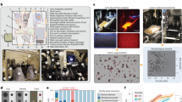

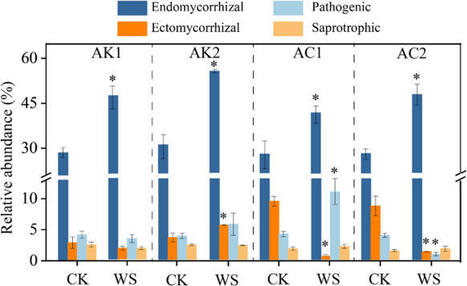

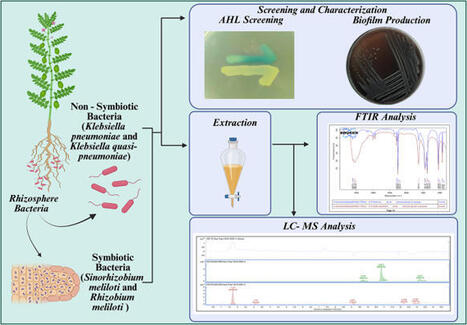

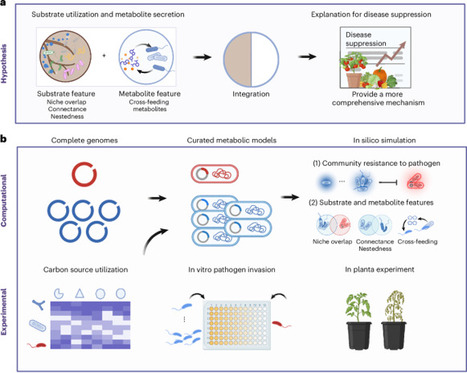


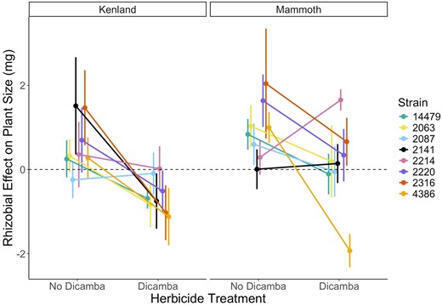
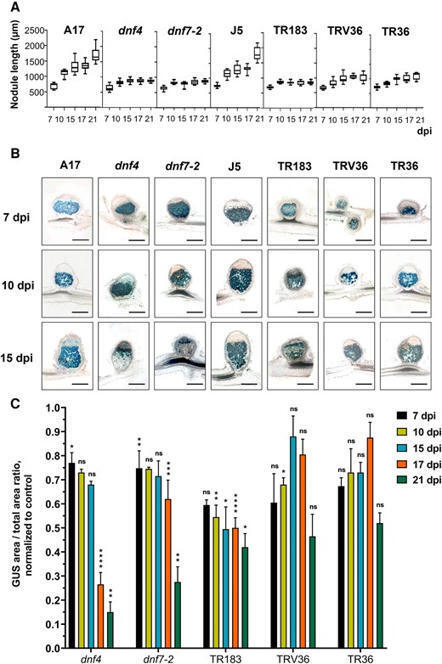
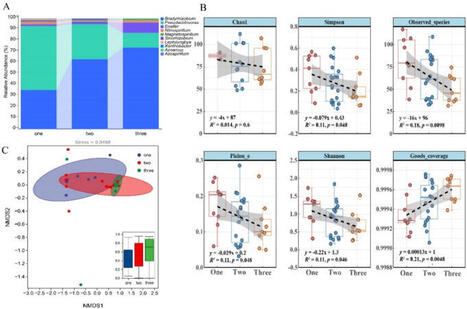
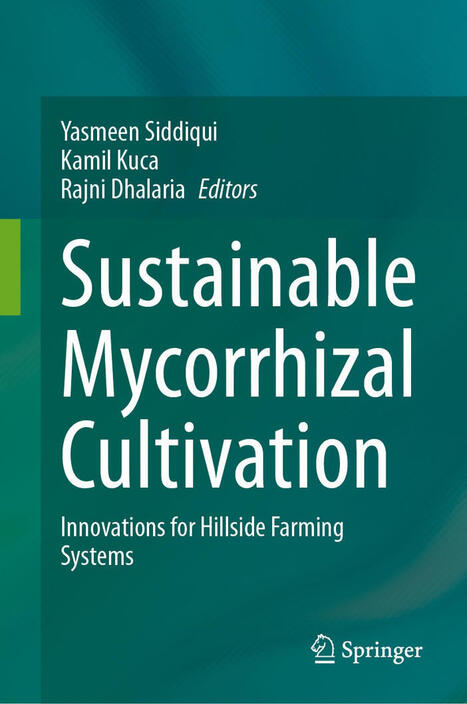





Great preprint that demonstrates that AON is more complex than the current model.